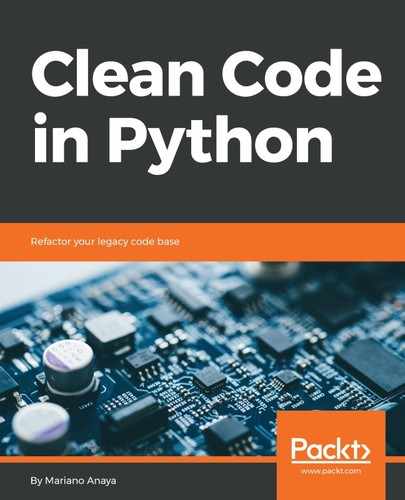In this section, are first going to take a look at unit testing from a conceptual point of view. We will revisit some of the software engineering principles we discussed in the previous to get an idea of how this is related to clean code.
After that, we will discuss in more detail how to put these concepts into practice (at the code level), and what frameworks and tools we can make use of.
First we quickly define what unit testing is about. Unit tests are parts of the code in charge of validating other parts of the code. Normally, anyone would be tempted to say that unit tests, validate the "core" of the application, but such definition regards unit tests to a secondary place, which is not the way they are thought of in this book. Unit tests are core, and a critical component of the software and they should be treated with the same considerations as the business logic.
A unit tests is a piece of code that imports parts of the code with the business logic, and exercises its logic, asserting several scenarios with the idea to guarantee certain conditions. There are some traits that unit tests must have, such as:
- Isolation: unit test should be completely independent from any other external agent, and they have to focus only on the business logic. For this reason, they do not connect to a database, they don't perform HTTP requests, etc. Isolation also means that the tests are independent among themselves: they must be able to run in any order, without depending on any previous state.
- Performance: unit tests must run quickly. They are intended to be run multiple times, repeatedly.
- Self-validating: The execution of a unit tests determines its result. There should be no extra step required to interpret the unit test (much less manual).
More concretely, in Python this means that we will have new *.py files where we are going to place our unit tests, and they are going to be called by some tool. These files will have import statements, to take what we need from our business logic (what we intend to test), and inside this file we program the tests themselves. Afterwards, a tool will collect our unit tests and run them, giving a result.
This last part is what self-validation actually means. When the tool calls our files, a Python process will be launched, and our tests will be running on it. If the tests fail, the process will have exited with an error code (in a Unix environment, this can be any number different than 0). The standard is that the tool runs the test, and prints a dot (.) for every successful test, an F if the test failed (the condition of the test was not satisfied), and an E if there was an exception.
